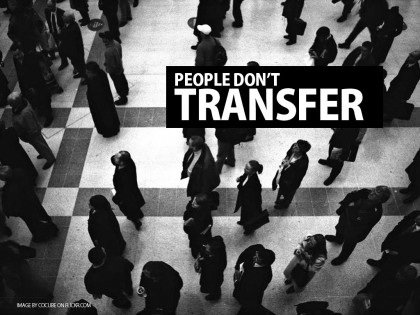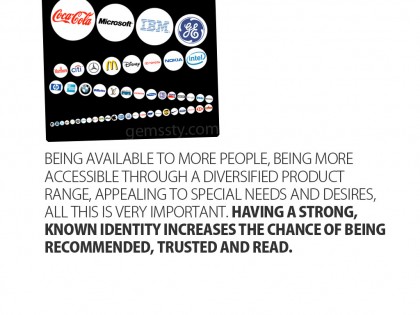
A strong value based identity doesn’t necessarily help your customers enjoy more of your offerings on a wider range of platforms
. It’s sometimes more about creating trust and recognition, increasing the possibility that more customers will fall in love with your offering on their preferred terms.
A post I’ve recently been forwarded from Damiano, Gawker comments on an Essay by Sarah Lacy where she questions the whole meaning of the personal brand
. The reason according to Gawker is that she can’t transfer people between platforms and even worse, people don’ even know about the different channels she’s on. They just don’t transfer.
This is my second of three comments on the subject
should be carefully monitored.- lower range (‘normal’) buy viagra online.
. The first here.
First of all, I agree with Lacy, people don’t transfer
. But that shouldn’t be her goal either
.
The main reason for expanding your product line should be accessibility: Giving readers increased access through expanded range of platforms or concept. Not forcing him or her into your preferred format
.
As Lacy ads more platforms to her publishing it just means she reaches more people.
This is relevant to Leadbeater’s guidelines for collaboration: People want to contribute in their own way, let them. The same goes for consuming information. Some readers want to visit your blog, some want to subscribe to your twitter and some want to get your newsletter in their email inbox once a week.
Being available to more people, being more accessible through a diversified product range, appealing to special needs and desires, all this is very important. Having a strong, known identity increases the chance of being recommended, trusted and read.

If you look at the tomato sauce industry people don’t buy more of every type of tomato sauce because there are 32 types in the range. But the range gives them a better opportunity to find their one special sauce. This according to Howard Moscowitz and Malcolm Gladwell will be the difference between tomato sauce that makes you wince, and tomato sauce that makes you deliriously happy.
View Gladwell’s talk about the Horizontal Plane in this excellent presentation from TED.


These are all great points. The overall notion of the Web being the platform and not the service is something I hope more brands will come to realize. However, one thing I will say is that even smart marketers, who understand that they must participate alongside audiences within various platforms, must realize that being accessible through multiple digital touchpoints may not be enough.
In quoting Jyri Engestrom, he states that “No single service, no matter how large and powerful, is the platform. The Web is the platform.” Sounds obvious enough, but in order for this to happen we need to be looking for ways to help connect all of these services together, so that they can allow everyone to interact with brands across the entire Web when and how they like. That will really be the challenge for us as agencies and marketers in the year to come. Hopefully 2009 will bring about the technology and openess to allow more of this.
Thanks for the inspiration, great post.
Brilliant extension to my thoughts David :o)
Totally agree with the platform, but not sure it will be the web. I think standalone software can be even more important and powerful. The browser has it’s limitations, and I think/hope each brand needs to choose based on the abilities and ambitions of the service.
Where as both both Nike+ and Fiat eco:drive uses the browser excellently, iTunes uses it’s own sowftware platform.
With technologies similar to Adobe Air, Microsoft Silverlight, Azure, Chrome etc. I think the possibility that there will be desktop software as the foundation is increasing.
If not Jyri is referencing The web as more of an abstract concept?